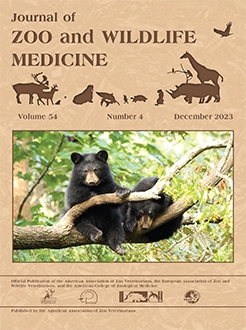Cownose rays (Rhinoptera bonasus) are susceptible to ocular disease with their prominent globes, but despite being popular animals housed in aquaria, there is little published information about their normal ocular anatomy and common pathologic ocular findings. A total of 63 live cownose rays (CNR) from three unrelated, separately housed groups had ocular examinations, and 5 adult rays were selected for ocular ultrasound. All examinations were performed out of the water, and most without anesthesia. Clinical findings were described, categorized, and scored by severity. Sixty-two of 63 rays (123 eyes) had clinical abnormalities, including 110 eyes with corneal pathology (mild = 76, moderate/severe = 34) and 74 eyes with intraocular pathology (mild = 44, moderate/severe = 30). Grey-to-white corneal opacities were the most common pathology (n = 58 rays/100 eyes) followed by cataracts (n = 41 rays/58 eyes), then persistent (or dysplastic) pupillary membranes (n = 14 rays/15 eyes). Most pathologic findings appeared inactive, but one aquarium had several CNR with active ocular pathology. There was a significant association between the diagnosis of moderate/severe corneal and intraocular pathology with age (P = 0.008 and P = 0.014, respectively) and weight (P = 0.001 and P = 0.039, respectively), as well as moderate/severe corneal pathology and group sampled (P = 0.03). There were no other significant variables identified. Additionally, histopathology of 14 eyes (11 rays) from two different facilities were examined, with keratitis (n = 8) and uveitis (n = 2) as the most common lesions. This study shows a high prevalence of pathologic ocular findings in cownose ray eyes with heavier adults more likely to be affected than lighter juveniles. Comprehensive ocular evaluation is important in this species and serial ocular exams and future studies should be pursued to monitor ocular disease progression and better understand possible etiologies.
How to translate text using browser tools
9 January 2024
CLINICAL AND HISTOPATHOLOGIC OCULAR FINDINGS IN AQUARIUM-HOUSED COWNOSE RAYS (RHINOPTERA BONASUS)
Braidee C. Foote,
Lindsay D. Seyer,
Laura Martinelli,
Caroline Betbeze,
Kim Newkirk,
Karen Terio,
Xiaojuan Zhu,
James G. Johnson III,
Jared Durrett,
Chris Buckner,
Christa E. Barrett,
Julie D. Sheldon
ACCESS THE FULL ARTICLE





